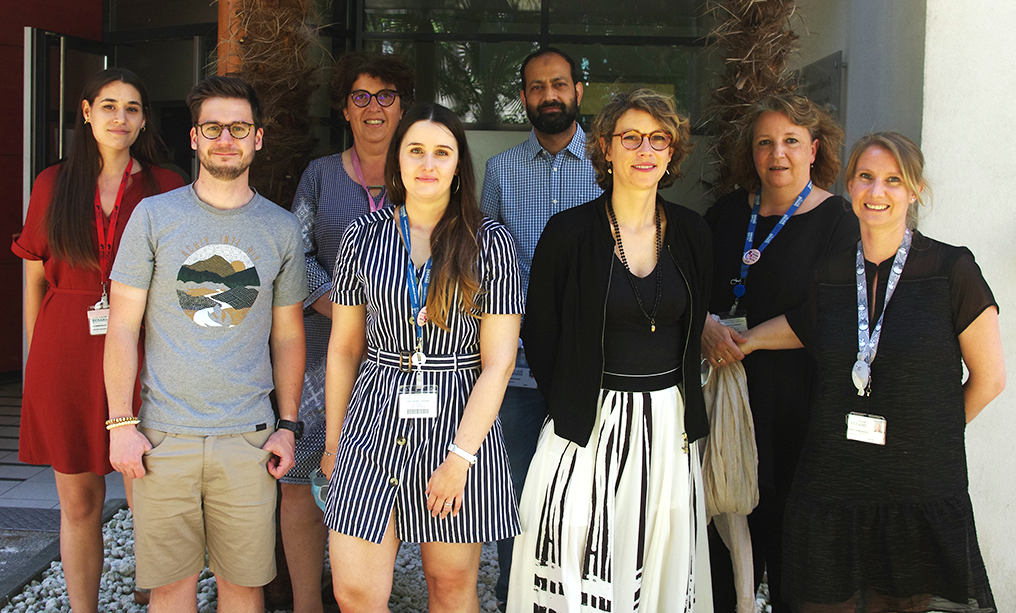Inflammasome et cancer

Objectifs
My team is dedicated to study novel functions and regulations of the inflammasomes in diseases with a special emphasis on cancer.
Inflammation is a biological process mounted by the innate immune system and plays a crucial role in the defense against pathogens and in tissue repair. When dysregulated, inflammation is responsible for many pathological disorders such as diabetes, ageing-related disorders including cancer. The initiation of the inflammatory response relies on the sensing of the Pathogen- Associated Molecular Pattern (PAMP) or the Damage-Associated Molecular Pattern (DAMP) by Pattern Recognition Receptors (PRR).
Inflammasomes are cytosolic multiprotein complexes that play prominent roles in innate immunity and inflammation. They control the activation of caspase-1 and, as a consequence, the processing of the pro-IL-1b and pro-IL-18 into active IL-1b and IL-18. In addition, caspase-1 cleaves the Gasdermin-D protein to induce a cell death named pyroptosis. NLRP3 is one of the PRR that triggers inflammasome assembly. It senses a variety of PAMPs and has the unique ability to detect DAMPs released by damaged cells during stress conditions.
Thus, NLRP3 integrates a large diversity of stress signals, which all culminate in the activation of caspase-1. Inflammasome dysregulation results in many pathologies ranging from autoinflammatory disorders to cancer. But still more work is needed to fully understand how the NLRP3 inflammasome is regulated and its contribution to cancer.
Projets
Recently, we demonstrated that :
- the activation of the NLRP1b inflammasome by the anthrax Lethal Toxin in the absence of ASC results in IL-1b production and pyroptosis despite the absence of caspase-1 autoprocessing.
- NLRP3 is dispensable for NLRP1b activation.
- caspase-1 autoprocessing is mandatory for its activation within the NLRP3-inflammasome.
- the presence of an active inflammasome within the mammary tumor microenvironment facilitates mammary tumour growth by inhibiting NK cell recruitment and activity.
We also discovered inflammasome independent function for NLRP3:
- NLRP3 is a co-factor of the ATM required for full pathway activation
- NLRP3 loss protects the cell from DNA damage induced cell death
- NLPR3 is down-regulated in Non Small Cell Lung Cancer
The main questions we are currently addressing in my team are the following:
- Is NLRP3 a barrier to tumorigenesis?
- How do NLRP3 functions are regulated?
Project 1: to understand the role of NLRP3 in the DNA damage response and repair (investigators: V. Petrilli, A. Tissier, A.L. Huber, S. Hacot, Gérossier L., D. Burlet)
Project 2: to determine at the molecular level how circadian clock regulate NLRP3 functions (investigators A.L. Huber, V. Petrilli)
Project 3: to develop novel tools to study inflammasome activation (investigators: J. Nadjar, V. Petrilli)
-
Virginie PETRILLI
Chef d’équipe
virginie.petrilli@lyon.unicancer.fr
04 78 78 28 28Cheney D – 6ème étage
Centre Léon Bérard